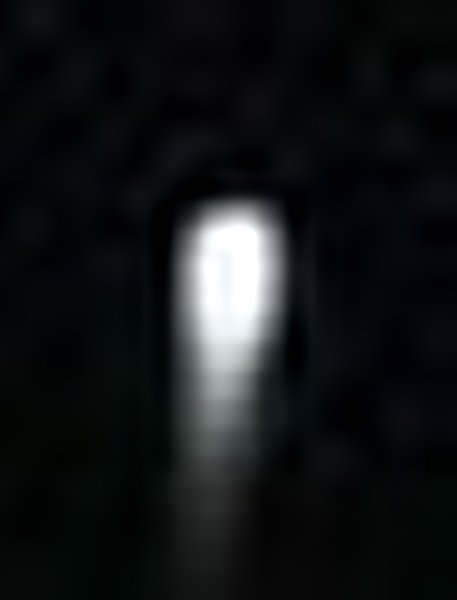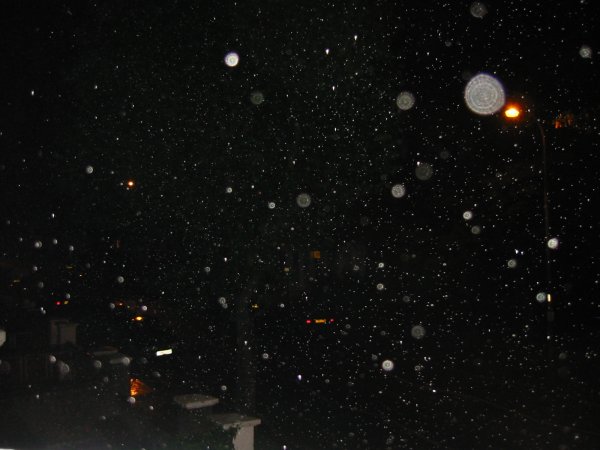Malcom Mitchell photographs
examined by Stephen D. Smith
Well done, Vincent, for finding webspace for so many pictures of Borley -
I'm sure your server must be almost full to bursting point!
. . . . many of these photos. . . . add nothing to our understanding of the
alleged phenomenon at Borley. They're simply photographs, period. Among the
most recent contributions were some wonderful daytime views of the church
from Malcolm Mitchell.
Then, every-so-often, there's a picture that contains something curious but,
more often than not, it turns out to be a trick of the light or to have some
other natural explanation. The recent photograph . . . . which some
people thought showed "the Borley monk", is one such example; as analysis
revealed that the monk was, actually, some leaves. Ho-hum...
Other pictures - like those submitted by Shaun Copple and Gary Cooke -
seemingly have no "natural" explanation, although that does not mean that
the answer lies in the "supernatural". While these photographs certainly
don't provide hard evidence of ghostly activity at Borley, they are
certainly more than a little curious.
I [have] speculated about
the possibility of rain drops or moisture in the air being responsible for
the white blobs seen on some photographs at Borley. These blobs are not on
the camera's lens (otherwise they'd appear in the same place on each photo)
but, rather, are falling from the sky and illuminated by the camera's flash
and, thus, caught on film. I stand by this explanation, as it is both
logical and simple (like me!), though I'm not suggesting that it accounts
for all of the white blobs seen on pictures of Borley.
A group of ghost hunters (featured in a TV program made for Channel 5 in the UK and imaginatively entitled "Haunted Britain") speculated that these white blobs - or whatever
they are - were parts of the same entity and that, eventually, they all
merged together to comprise someone or something. So, it may be that these
Borley "blobs" are part of an entity. I just wish someone would photograph
them when they're joined together, rather than when they're scattered about!
 I still think moisture, etc. is the more likely explanation in most cases,
and it was with this in mind that I looked at Malcolm Mitchell's night time
pictures of Borley. "More raindrops being illuminated", I thought, but a
second, closer look revealed something quite startling. No mention of it is
made in the accompanying text, so I thought I'd bring it to your attention.
It is this: some of the raindrops appear to be moving up, i.e. towards the
sky, as they have "tails" underneath them, indicating that they were moving
for the duration of the time that the camera's shutter was open. These
upwardly-mobile "blobs" are visible in the 2nd, 3rd, and 5th pictures. Here's a close up of the upwardly-mobile white blob seen near the center of
Malcolm Mitchell's fifth picture.
I still think moisture, etc. is the more likely explanation in most cases,
and it was with this in mind that I looked at Malcolm Mitchell's night time
pictures of Borley. "More raindrops being illuminated", I thought, but a
second, closer look revealed something quite startling. No mention of it is
made in the accompanying text, so I thought I'd bring it to your attention.
It is this: some of the raindrops appear to be moving up, i.e. towards the
sky, as they have "tails" underneath them, indicating that they were moving
for the duration of the time that the camera's shutter was open. These
upwardly-mobile "blobs" are visible in the 2nd, 3rd, and 5th pictures. Here's a close up of the upwardly-mobile white blob seen near the center of
Malcolm Mitchell's fifth picture.
I have to confess that this is a very puzzling phenomenon, and one that is
completely beyond rational explanation - by me, at least. (Incidentally,
it's not because the camera was moved as the picture was taken, otherwise
all the blobs would have tails. Also, they're not shooting stars, because
not all of the snapshots are facing the sky). These pictures by Malcolm
Mitchell are, in my opinion, to be ranked with those by Gary Cooke and Shaun
Copple as "unexplainable".
With best wishes, as ever,
Stephen D. Smith
Further discussion
4 June 2002
Re. the "upwardly-mobile blob" in Malcolm Mitchell's picture(s):
I now believe this is a rain drop falling down, not a blob moving up.
Here's my revised reasoning as to how this effect might be captured on film:
1. Raindrop falls towards ground.
2. Camera's flash fully illuminates the raindrop as the photograph is
snapped.
3. Raindrop continues to fall and flash dies away (although flash bulbs
explode with light when they come on, that light does not switch off at the
same high speed, it fades away slightly more slowly - it's not "flash
on/flash off", it's "flash on/flash offfffffffff").
4. This means that as the raindrop falls further, there is less and less
light on it as the flash fades. This would account for the "tail" in the
picture which gives the impression of upward movement but, in fact, what
we're looking at is probably falling down.
It will be appreciated that the whole process is very quick, taking only a
fraction of a second. Of course, the distance from the camera to the rain
drops - and the angle at which the rain is falling - would have some bearing
on how bright a "blob" appeared to be and on the angle of its "tail".
Malcolm Mitchell, who took these photographs, has asked me to point out that
he disagrees with my assessment.
With best wishes,
Stephen D. Smith
Bravo Mr. Smith! . . .Your technical analysis of flash vs falling raindrops appears to be spot on. The geometry of a raindrop blur is exactly what I expected; the blur is the same width as the water droplet. Note that the "tail" of the drops, a consequence of the flash, is transparent to the extent that you can see what's behind the blur, something I will have to compare with orb shots. But I still have a problem reconciling the appearance of the raindrop blurs with the objects in other pictures claimed to be orbs, both the stationary spheres and the teardrop outline of the shooting orbs. Note that I also came across shooting orb pictures which appear to be shot *inside* a building which would eliminate the possibility of blurred raindrops altogether. The bottom line is that l feel that the Borley Rectory Cemetary pictures still contain many irregularities.
Thank you for listening.
Scott Cunningham
Hello Scott, and many thanks for your message.
My assessment of the circumstances that created the "tail", etc. was based
on the limited knowledge I have of cameras and their operation. It seemed a
logical and plausible explanation. However, I totally agree that there are
many anomalies at Borley that have yet to be _properly_ explained,
especially the orbs.
I have never been a member of the "If we can't explain it now, it must be
supernatural" clan. In my view, it is for those people who claim that
something is supernatural to prove it and saying "you have no evidence that
it isn't supernatural" is not an adequate or sensible response.
Nevertheless, as I've said many times before, there is always room for
learned and scholarly debate on subjects such as this and it is only by
chipping away at these various anomalies that, ultimately, we will separate
the truly "supernatural" from the "natural".
Thanks, again, for taking time to write.
With best wishes,
Stephen D. Smith
17 June 2002
At the risk of protracting even further my theories about the effects
obtained when rain (or other moisture) and camera flashlights are brought
together:
Here is a photograph I snapped at night with my digital camera through an
open window in my house during a recent downpour of rain. I have to say that
I cannot help but notice the similarity between the effects obtained in this
picture and in other photographs on the Borley website.

I am NOT saying that rain/moisture accounts for all of the "blobs" or "orbs"
or whatever else people may call them that are seen in photographs of
Borley, but I do believe it is responsible for some and, furthermore, I
suggest that my photograph provides ample evidence and reinforcement of this
belief.
Let me state for the record that I am a believer in ghostly activity at
Borley and that I am not simply out to "debunk" the alleged phenomena there.
However, I do seek to separate the "natural" happenings from the
"supernatural" ones.
With best wishes,
Stephen D. Smith
 I still think moisture, etc. is the more likely explanation in most cases,
and it was with this in mind that I looked at Malcolm Mitchell's night time
pictures of Borley. "More raindrops being illuminated", I thought, but a
second, closer look revealed something quite startling. No mention of it is
made in the accompanying text, so I thought I'd bring it to your attention.
It is this: some of the raindrops appear to be moving up, i.e. towards the
sky, as they have "tails" underneath them, indicating that they were moving
for the duration of the time that the camera's shutter was open. These
upwardly-mobile "blobs" are visible in the 2nd, 3rd, and 5th pictures. Here's a close up of the upwardly-mobile white blob seen near the center of
Malcolm Mitchell's fifth picture.
I still think moisture, etc. is the more likely explanation in most cases,
and it was with this in mind that I looked at Malcolm Mitchell's night time
pictures of Borley. "More raindrops being illuminated", I thought, but a
second, closer look revealed something quite startling. No mention of it is
made in the accompanying text, so I thought I'd bring it to your attention.
It is this: some of the raindrops appear to be moving up, i.e. towards the
sky, as they have "tails" underneath them, indicating that they were moving
for the duration of the time that the camera's shutter was open. These
upwardly-mobile "blobs" are visible in the 2nd, 3rd, and 5th pictures. Here's a close up of the upwardly-mobile white blob seen near the center of
Malcolm Mitchell's fifth picture.
